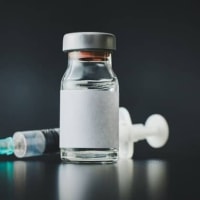
Prediabetes is a condition where your blood sugar levels are higher than normal but not high enough to be categorized as type 2 diabetes.
The pancreas is an essential part of the system that regulates sugar levels. They produce insulin. Insulin allows sugar, or more particularly, glucose to enter into your cells.
If, because of any underlying reason, the body doesn't produce enough insulin, sugar accumulates in the bloodstream.
Accumulated sugar in the blood is the precursor to diabetes.
Prediabetes doesn't have very obvious signs of glucose intolerance . But some people experience darkening of the skin around the neck, armpits, and elbows. This condition can be easily diagnosed by a simple blood test.
The exact cause of prediabetes is not known. Prediabetes doesn't guarantee type 2 diabetes either. This condition can be successfully reversed. It is just a type of glucose intolerance condition.
But how to know if you are glucose intolerant ? Let's find out.
Glucose Intolerance
Glucose intolerance, in a way, is dysglycemia. It's a condition that often leaves you hanging between prediabetes and diabetes.
The patient often has impaired fasting glucose and impaired glucose tolerance.
There are certain glucose intolerance symptoms such as:
√ Feeling very thirsty
√ Dry mouth
√ Extreme tiredness
√ Blurred vision
√ Drowsiness
√ Frequent need to urinate
√ Loss of muscle mass
These symptoms of glucose intolerance may not be severe and vary from person to person.
However, any of these can also be indicating other conditions that have nothing to do with glucose intolerance. But it's safe to say that if you're experiencing multiple signs, you must see a doctor for a proper diagnosis.
Now, when it comes to prevention, there are many things you can do. One of the first steps is to clean out your diet and replace high sugar foods with healthier options.
Plus, remember to eat on time and not too late at night. You're only going to be risking your health even more by doing that.
Sleeping on time is also crucial to get some rest and provide the body with a window of recovery from a hard day's work.
The body might even get a better chance at healing itself as best as possible when you take a rest and not overexert it by working late at night.
But once you get a diagnosis of prediabetes, you've got to make some changes and listen to what your doctor says. At this point, you'll have to pay attention to not let the situation get any worse.
Right below, we've listed some of the major precautionary steps you can take to cut back on your risk of developing diabetes.
Reversing Prediabetes
# 1. Losing Weight: Any health disorder and obesity is the first to be blamed. Studies have shown that a 7% loss in body weight improves the ability to respond to insulin by 57%. So, this is an added benefit for you to shed off a few pounds.
# 2. Right diet: Foods, such as oats, whole grains, yogurt, and dairy products, green leafy vegetables, apples, blueberries, walnuts, brown rice, and legumes are associated with reduced diabetes risk. Include low-fat and low-calorie foods in your diet. You should also increase your fiber intake.
# 3. Exercise: It increases your insulin sensitivity apart from boosting your physical and mental health. A variety of light exercises, such as jogging or walking can be combined with little exhaustive ones, such as aerobics and swimming to make an effective routine.
# 4. Cut down on Beverages: Sugar-sweetened beverages contain fructose. It is linked to insulin resistance. One should cut down on such beverages immediately.
Apart from this, one needs to be hydrated. Hydration can affect the regulation of blood sugar levels. in your body.
# 5. Sleep: Maintaining a regular sleep schedule is vital to help yourself in reversing prediabetes. Seek medical help if you suffer from insomnia or sleep apnea.
# 6. Reduce Stress: Managing mental stress is a key part of both weight loss and effective glucose control. When you're under stress, your blood sugar levels can increase. In fact, if you're wondering what causes glucose intolerance , know that stress is one of the prime reasons.
You can practice yoga, do mediation, or talk to any therapist for help.
Takeaway
Bring your sugar level to a safe range is the key. By doing so, you are also lowering the risk of complications like heart disease, stroke, and nerve damage.
Get active and eat healthy to start eliminating your risks.













※コメント投稿者のブログIDはブログ作成者のみに通知されます